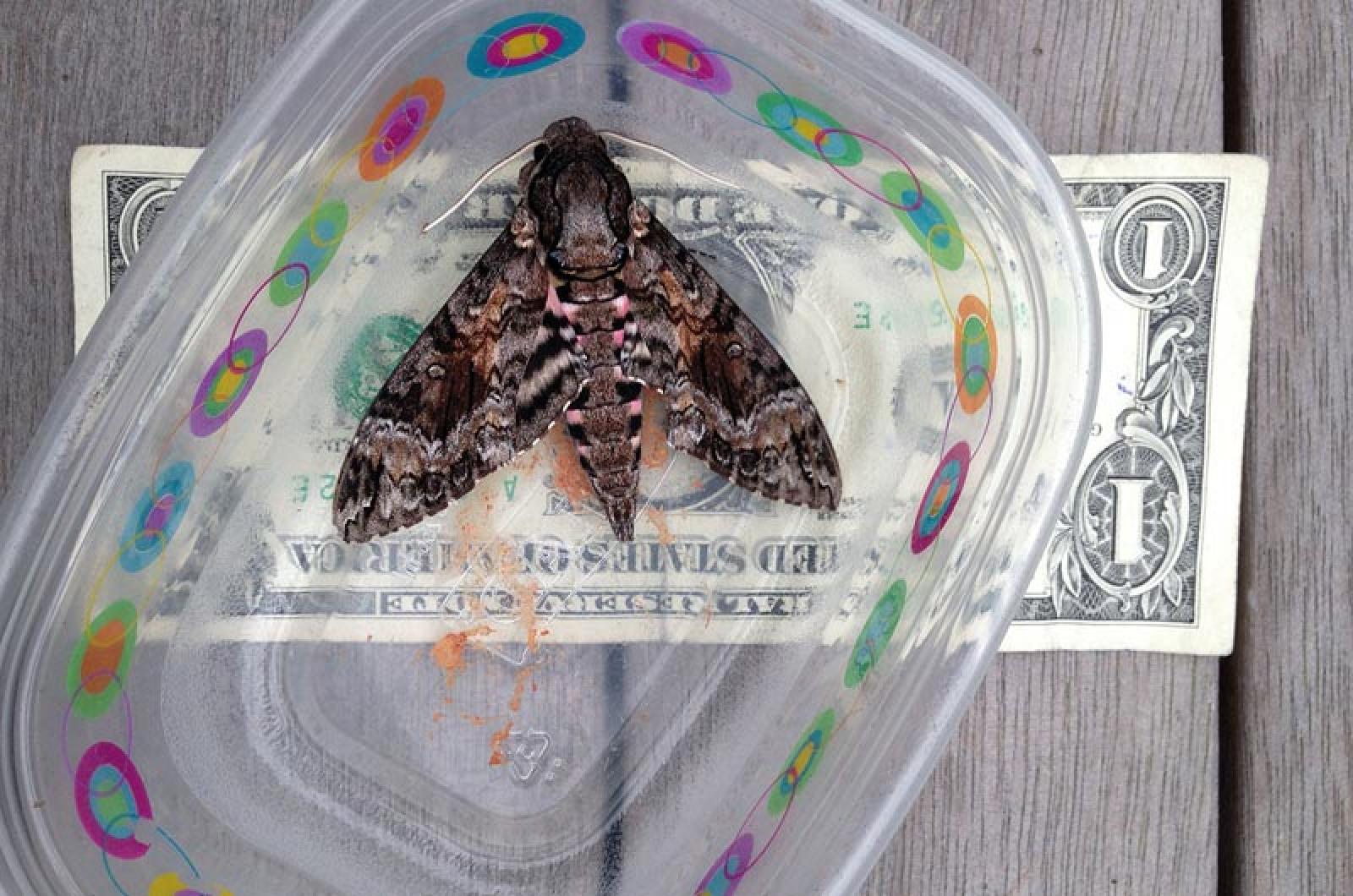You just never know who you will find at your door this week.
Halloween brings all variety of costumed creatures to your porch, big and small, all looking for a sweet treat. Maggie Littlejohn of Edgartown had a special seasonal visitor at her house last week, one that did not beg for candy or yell boo!
Her caller was adorned with grey and bright pink stripes on its body and wondrous large wings. These four-and-a-half-inch wings were not held on by straps, tape or glue: these wings were wild and belonged to the pink spotted hawk moth. Two antennae and fantastically furry feet completed this critter’s costume.
The pink spotted hawk moth is easy to identify and hard to forget. Maggie noted that in her more than 20 years here, she had never seen one. This insect is a large moth in the family of sphinx moths, a group that also includes the Pandora sphinx moth, the five-spotted hawk moth (tomato hornworm), and the hummingbird moth.
Though considered a neotropical species and found throughout North America, the pink spotted hawk moth is more common in the southern United States and South America. However, they are not a rare visitor to these parts. Considered an autumn vagrant, this moth is an occasional stray around here. With those sizable wings, it is a strong flyer and has been observed as far north as Nova Scotia and Newfoundland.
However, as a breeder, it is less common in this area. There are fewer records of the caterpillar stage here in New England. The pink spotted hawk moth lays her eggs in warmer climes and generally individually. A single egg will hatch into a large caterpillar with a horn, and is known as the sweet potato hornworm for its affection for those starchy vegetables. Two years ago in November, one of these caterpillars was found on-Island and reported in this column, proving that it does breed on the Vineyard. Maggie should keep watch for the caterpillar version, perhaps an even more unforgettable creature. The adult moths that are occasionally seen have an affinity for large and often night-blooming flowers such as morning glories, and also honeysuckles and petunias, drinking down their nectar to fuel their flight. An unusually long proboscis, a straw-like mouthpart, helps the moth dig deep for the flower’s sweet syrup.
With all of its finery, it is difficult to determine the moth’s gender; however, that was the next question Maggie asked after “What is it?” To differentiate the sexes, look to that pink-striped abdomen or the insect’s antenna. A thicker abdomen indicates a female, while a thicker antenna suggests the male of the species.
Like those Halloween trick or treaters, this animal is nocturnal and will be visiting other front doors this month, being especially drawn to the porch light. You could welcome these visits or simply avoid them in the same way you would discourage tonight’s trick or treaters — by just leaving the lights off.
Suzan Bellincampi is director of the Felix Neck Wildlife Sanctuary in Edgartown, and author of Martha’s Vineyard: A Field Guide to Island Nature.




Comments
Comment policy »